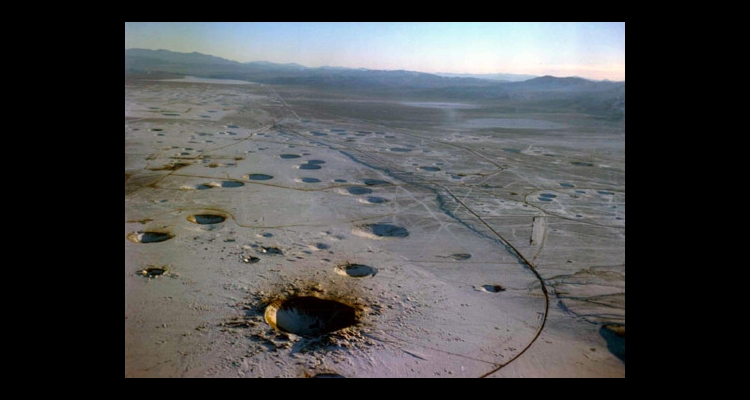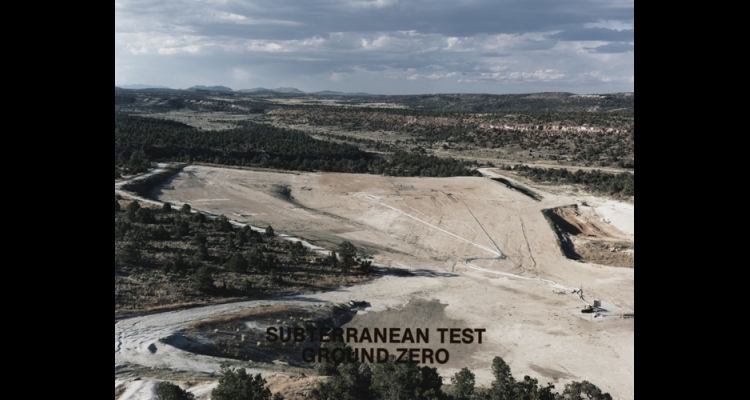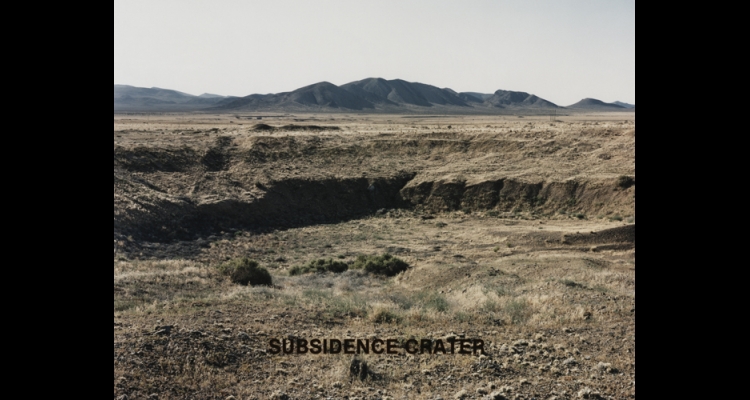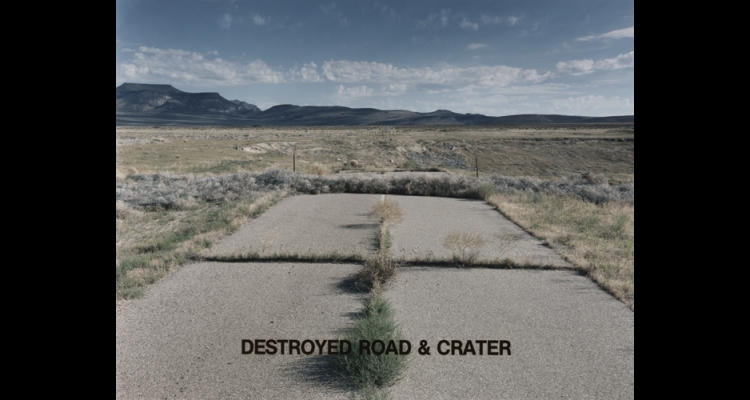Underground Nuclear Testing at the Nevada Test Site
One hundred above-ground nuclear tests were conducted at the Nevada Test Site (NTS) between January 27, 1951, and July 17, 1962. On August 5, 1963, the Soviet Union and the United States signed the Limited Test Ban Treaty (LTBT), which prohibited nuclear tests in the atmosphere, under water, and in space. From that time, until the end of testing in 1992, nuclear tests at the NTS were conducted underground. However, these post-LBTB tests were not the first underground nuclear events at the NTS. An underground test had been designed and detonated during the first year of testing at the United States’ nuclear proving ground in Nevada. Code-named Uncle, the Los Alamos laboratory-Department of Defense (DoD) cratering test exploded on November 29, 1951. With a yield of 1.2 kilotons, its purpose had been to test the capabilities of underground nuclear detonations as tactical weapons.
During the 1957 Plumbbob test series, three underground tests were conducted. Two Los Alamos laboratory tests, code-named Pascal-A and Pascal-B, were detonated in unstemmed holes in Yucca Flat. These were early instances of nuclear detonations at the bottom of vertical drill holes or shafts. A third test, Rainier, conducted by the Livermore laboratory, was the first contained underground nuclear detonation at the NTS. The tunnel in Area 12 of the NTS where this first test occurred became known as Rainer Mesa. Even before the LTBT, when the United States in 1961 returned to nuclear testing after a moratorium with the Soviet Union, most tests were conducted underground.
A total of 828 underground tests, consisting of 921 detonations, took place at the NTS. Once mandated by the LTBT, underground testing posed significant challenges for Atomic Energy Commission officials, weapons scientists, engineers, contractors, management, and labor at the Nevada Test Site. It took much longer to prepare underground nuclear test environments than it had to field above-ground experiments. New technologies for experiments and diagnostics had to be developed. Drilling and mining equipment and other technologies had to be modified and improved upon to meet the needs of weapons tests. Underground safety protocols had to be implemented for all phases of the experiments. The shafts and tunnels where tests were conducted needed to be stemmed and sealed to prevent the escape of radioactive materials from the explosions. Stemming and sealing materials and methods were developed and tested on a trial-and-error basis. Structures and processes for emplacing the nuclear device canister underground had to be invented. Once a test was detonated, data had to be captured and transmitted through cables from the subterranean ground zeros to recording equipment on the surface. During the nearly thirty years of the underground testing program at the NTS , the Los Alamos and Livermore weapons laboratories developed different stemming, testing, and diagnostic practices.
After the nuclear detonation in a shaft, a formation called a “subsidence crater” usually occurred. Such craters are not caused directly by the nuclear blast itself, but from the earth’s surface sinking due to the void created by the underground explosion’s liquefying of surrounding rock. Some subsidence craters formed shortly after the detonation, others took much longer to develop. Visitors can view subsidence craters in the Yucca Flat areas of the NTS during public tours. Some tours include driving into the large crater created by the 249-kiloton Bilby test, detonated September 13, 1963. According to the Department of Energy’s unclassified list of nuclear tests, there were a small number of underground tests greater than 1 megaton detonated in shafts in the Pahute Mesa area of the NTS.
Weapons effects tests for the DoD were conducted primarily in tunnels that had to be mined, secured, and prepared for emplacement of nuclear devices. Diagnostic equipment and materials to be exposed to the effects of the tests were placed in line-of-sight pipes inside the tunnels. Stemming materials and closures of various types were devised to contain the blasts underground and techniques developed for retrieving data after tests. Due to the size and scope of the tunnel tests, a permanent camp was set up at the test site’s Area 12 with large yards for storage and maintenance of equipment as well as housing and feeding of tunnel personnel.
During the era of underground testing, three nuclear cratering experiments were conducted at the NTS as part of the Plowshare program. Plowshare’s mission was to explore the peaceful uses of nuclear explosions for industrial applications, the creation of harbors, canals, dams, and, later, for natural gas production stimulation. Three experiments were designed to gather data on crater formation in hard rock: Cabriolet, conducted January 26, 1968; Buggy, conducted March 12, 1968; and Schooner, conducted December 8, 1968.
Although underground experiments were designed to contain nuclear explosions, there were times when tests vented accidentally, releasing radioactivity on and/or off the test site. One of the most serious accidents was the test code-named Baneberry. Early in the morning of December 18, 1970, the ten-kiloton test, designed by scientists from the Livermore laboratory, vented along a fissure near ground zero, releasing a large, radioactive cloud high into the air. The test shaft was in Area 8 of Yucca Flat and the cloud moved toward the Area 12 camp where hundreds of workers were still stationed. The camp was evacuated and workers underwent decontamination before being sent home. Significant fallout from the test was detected offsite in Nevada and surrounding states.
After Baneberry, the testing program was shut down for six months pending an investigation. The specific causes of the Baneberry venting remain a matter of debate among weapons scientists and other experts but both geology and excessive water used in the drilling process were major contributing factors. Upon resumption of testing, more stringent protocols were put in place for evaluation, analysis, and approval of test designs submitted by the weapons laboratories. In 1972, two NTS employees brought suit against the federal government for Baneberry. In 1982, the judge in the case ruled that the government had been negligent both in the evacuation and decontamination of Area 12 personnel. However, he later ruled against granting compensation to the widows of the two men who had since died of leukemia because the plaintiffs had not met the burden of proof to establish direct cause based on the doses of radiation they had received.
In 1988, the United States and the Soviet Union conducted the Joint Verification Experiment (JVE). The United States sent scientists and test site workers to the Soviet test site and the Soviet Union sent personnel to the NTS. The JVE was essential for establishing treaty verification protocols for the Threshold Test Ban Treaty (TTBT) and the Peaceful Nuclear Explosions Treaty (PNE), which stipulated that underground detonations could not exceed 150 kilotons. The August 17, 1988 Kearsarge test was conducted at the NTS and the September 14, 1988 Shagan test at the Soviet Semipalatinsk nuclear test site in Kazakhstan. Security was extremely high at both sites and simultaneous with the testing were crucial diplomatic negotiations. Many test site personnel who worked with their Soviet counterparts at the NTS and in the Soviet Union reported how meaningful the cross-cultural experience was for them. However, for some test site workers, having Soviet personnel at the top secret Nevada facility was an unsettling experience.
In September 1992 the U.S. Congress passed legislation known as the Hatfield-Exon amendment for a nine-month moratorium on nuclear testing. As a result, the final nuclear tests conducted at the NTS were the tunnel test (code-named Hunters Trophy) on September 18 and the shaft test (code-named Divider) on September 23, 1992. On October 2, 1992, President George H.W. Bush signed the law containing the testing moratorium amendment. Test site tourists can visit the 157-foot tower built for a joint U.S.-United Kingdom test, code-named Icecap, one of three cancelled 1993 ground zero tests.
On September 24, 1996, President Bill Clinton signed the Comprehensive Test Ban Treaty (CTBT), prohibiting nuclear weapons test detonations. The U.S. Congress has never ratified the treaty; however, the United States has maintained this cessation in nuclear testing.
Article Locations
Related Articles
None at this time.




